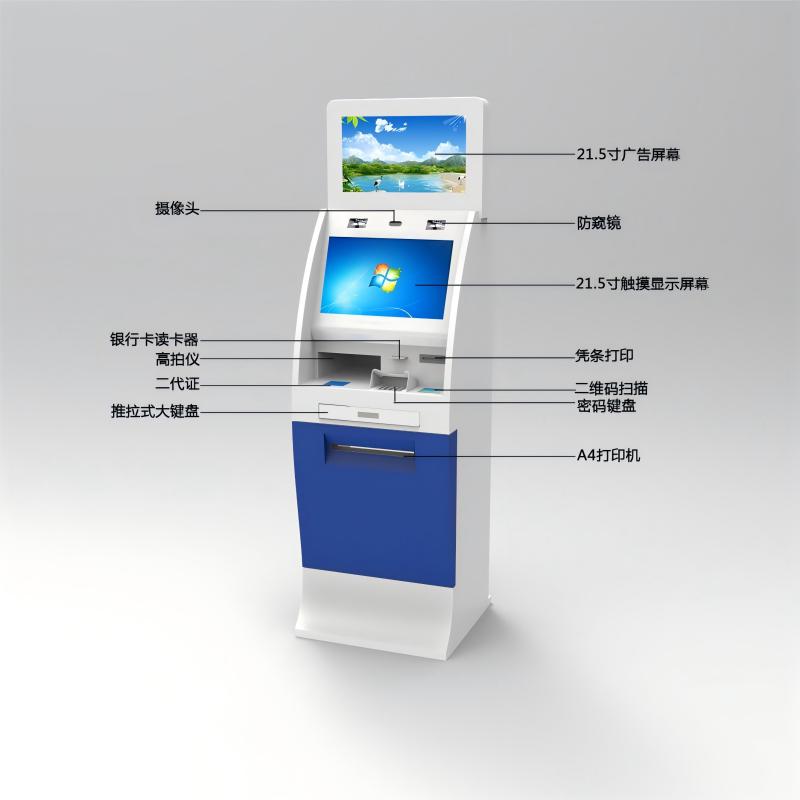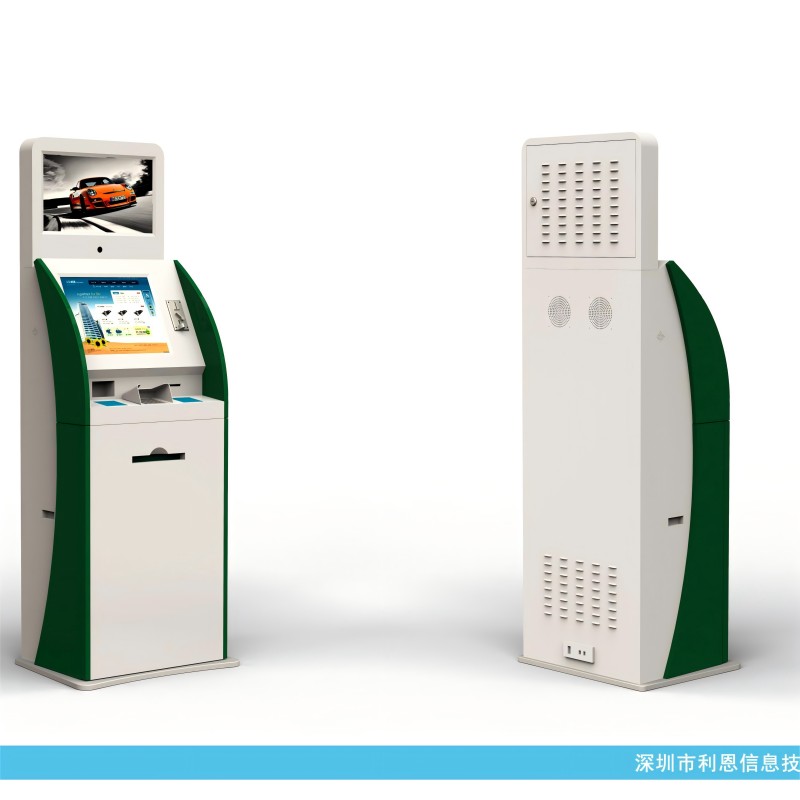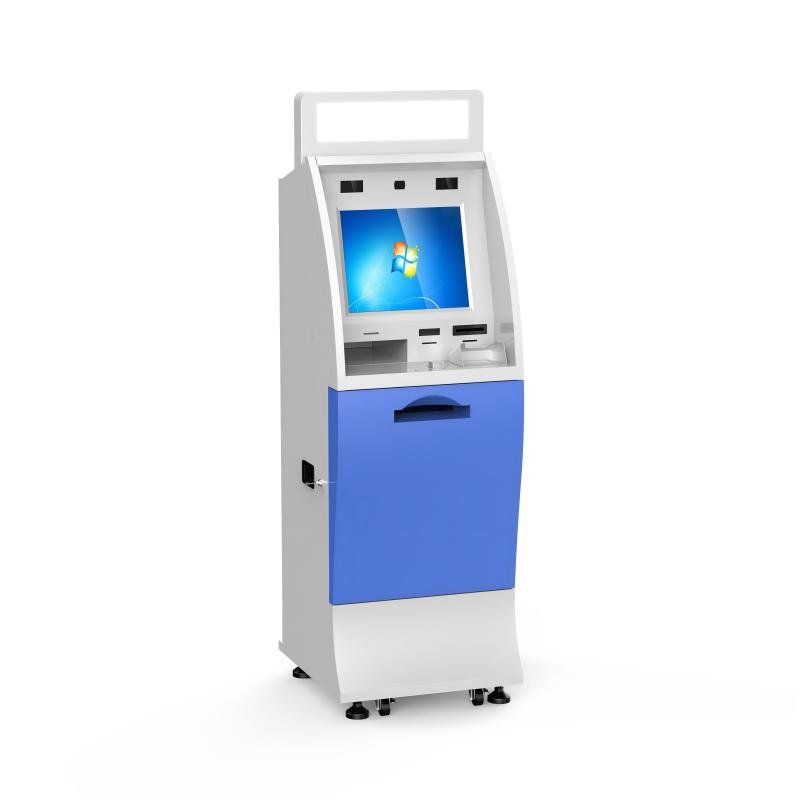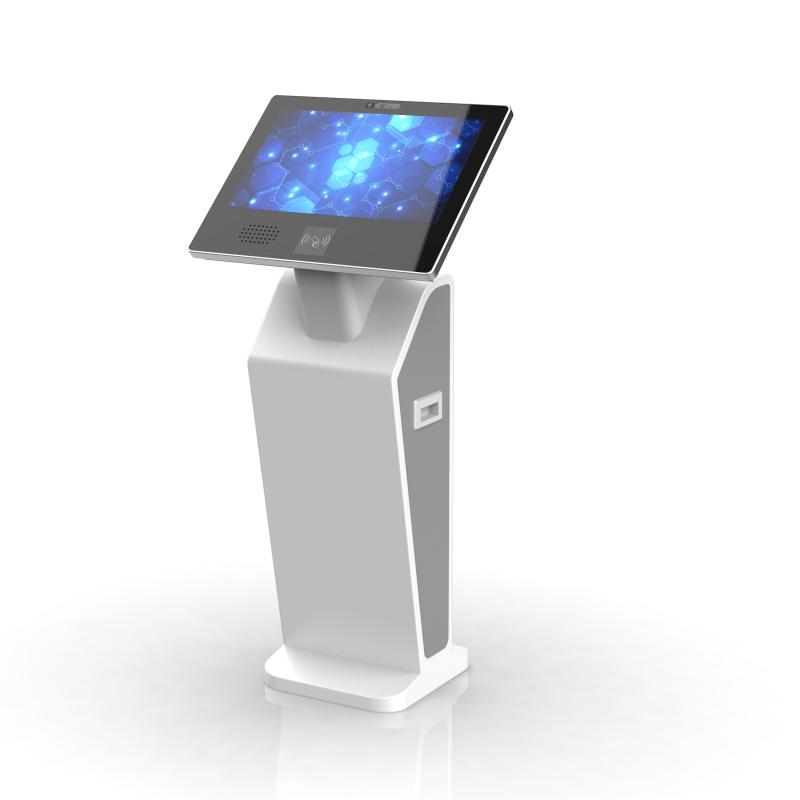| Component | Description | Manufacturing Process | Process Description |
|---|---|---|---|
| Touchscreen Display | Interactive screen for user input and navigation. | Design & Sourcing | Select the appropriate screen size, resolution, and durability for public use. |
| Enclosure | Robust and secure outer casing to protect internal components. | Fabrication & Assembly | Metal or plastic materials are cut, shaped, and assembled to create the kiosk's structure. |
| Processor & Motherboard | Core computing unit responsible for running the kiosk’s software. | Component Integration | High-quality processors and motherboards are sourced and integrated with other electronic components. |
| Payment Module | Device for processing transactions, including card readers and cash acceptors. | Installation & Testing | Payment modules are installed, and functionality is rigorously tested. |
| Printer | Thermal printer for printing receipts, documents, or confirmation slips. | Integration & Calibration | The printer is installed, calibrated, and tested for reliable operation. |
| Networking Components | Wi-Fi, Ethernet, or other communication modules for connecting to government networks. | Networking Setup | Networking hardware is installed and configured for secure and reliable connectivity. |
| Software | Customized operating system and application software for service delivery. | Software Installation | The operating system and custom government applications are installed, configured, and tested. |
| Power Supply | Provides necessary power to all components. | Power System Integration | Power supply units are integrated and connected to ensure stable and reliable operation. |
| Security Features | Includes cameras, biometric scanners, and encryption modules for secure transactions. | Security Integration & Testing | Security hardware is installed, configured, and tested for compliance with government standards. |
| User Interface Design | The layout and design of on-screen menus, buttons, and navigation tools. | UI/UX Design & Implementation | The user interface is designed for ease of use, installed, and tested for intuitive interaction. |
Government kiosk is equipped with robust hardware and advanced software to ensure efficient and secure service delivery. The hardware typically includes a high-resolution touchscreen display for easy user interaction, a durable enclosure designed to withstand heavy use, and a powerful processor coupled with a reliable motherboard that runs the kiosk’s applications. Additionally, these kiosks are often outfitted with payment modules for processing transactions, printers for issuing receipts or documents, and networking components like Wi-Fi or Ethernet for secure connectivity to government systems. Security features, such as biometric scanners and encryption modules, are integral to protect sensitive data.
On the software side, government kiosks operate on a customized operating system tailored to the specific needs of the services offered. The software includes user-friendly interfaces designed for easy navigation, ensuring citizens can quickly access the information or services they need. The software also integrates with back-end government databases, allowing for real-time updates and accurate processing of transactions, such as bill payments or license renewals. Security is a top priority, with the software incorporating encryption, access controls, and regular updates to safeguard against vulnerabilities. Together, the hardware and software provide a seamless, secure, and efficient platform for delivering government services to the public.

Bill Payment: Citizens can use government kiosks to pay utility bills, taxes, fines, and other government fees quickly and securely.
License Renewals: Kiosks allow users to renew driver’s licenses, vehicle registrations, and other official permits without visiting government offices.
Public Information Access: Kiosks provide access to public records, legal documents, and other government information, making it easier for citizens to stay informed.
Form Submission: Individuals can fill out and submit government forms, such as applications for benefits or permits, directly through the kiosk.
Voting and Surveys: Some government kiosks are equipped to facilitate voting in elections or collecting public opinions through surveys and polls.
Appointment Scheduling: Kiosks enable citizens to schedule appointments with government agencies, reducing wait times and streamlining service delivery.

Information Kiosks: Provide citizens with access to public information, such as government services, local events, and contact details for various departments.
Payment Kiosks: Allow users to pay taxes, utility bills, fines, and other government-related fees securely and efficiently.
Service Kiosks: Enable citizens to perform specific tasks such as renewing licenses, registering vehicles, or applying for government benefits.
Wayfinding Kiosks: Assist visitors in navigating government buildings or public spaces, providing maps and directions to offices, departments, or facilities.
Voting Kiosks: Facilitate secure and convenient voting in elections, ensuring accessibility for all eligible voters.
Survey and Feedback Kiosks: Collect citizen feedback, conduct public opinion surveys, and gather data on government services or community issues.

Touchscreen Interface: An intuitive and user-friendly touchscreen allows citizens to easily navigate services, access information, and complete transactions.
Multilingual Support: Kiosks often support multiple languages, ensuring accessibility for a diverse population and enhancing usability for non-native speakers.
Secure Payment Processing: Integrated payment modules enable secure transactions for paying bills, fines, or fees, including support for credit/debit cards and mobile payments.
Biometric Authentication: Some kiosks include fingerprint or facial recognition technology to securely verify the identity of users for sensitive services like voting or accessing personal records.
Document Printing and Scanning: Kiosks are equipped with printers to provide receipts or documents and scanners for submitting forms, ID copies, or other paperwork.
Real-Time Data Integration: The software integrates with government databases, allowing for real-time updates and processing, ensuring that all transactions and interactions are immediately reflected in official records.

Increased Accessibility: Government kiosks provide citizens with convenient access to essential services, reducing the need to visit government offices and allowing for 24/7 availability.
Time Efficiency: By offering self-service options, kiosks help citizens complete tasks like bill payments, form submissions, or license renewals quickly, minimizing wait times and streamlining processes.
Cost Savings: Kiosks reduce the need for staffing at government offices, lowering operational costs while maintaining or improving service levels.
Improved Service Delivery: Kiosks ensure consistent and reliable service, reducing human error and providing a standardized experience for all users.
Data Accuracy: Direct input by users into the kiosk systems minimizes errors and ensures that the information entered is accurate, helping to improve the quality of government records.
Enhanced Security: Equipped with biometric authentication and encryption, government kiosks provide secure access to services and protect sensitive personal information during transactions.

When purchasing a government kiosk, several key considerations should guide the decision-making process. First, evaluate the intended use and the specific services the kiosk will provide, as this will determine the required hardware and software features. Durability is critical, especially if the kiosk will be placed in high-traffic or outdoor locations, requiring robust materials and weather-resistant enclosures. Security features are also paramount, particularly if the kiosk will handle sensitive data or financial transactions; look for advanced encryption, biometric authentication, and secure payment processing options.
User experience should be a priority, with an intuitive interface and multilingual support to accommodate a diverse population. Additionally, consider the ease of maintenance and support—choosing a kiosk with remote monitoring capabilities and readily available technical support can minimize downtime. Lastly, assess the total cost of ownership, including initial costs, installation, maintenance, and potential software updates, to ensure the kiosk offers long-term value and aligns with budgetary constraints.

| Style | Sizes | Design Options | Price Range |
|---|---|---|---|
| Indoor Kiosk | Compact (15" - 19" screens) | Custom branding, touchscreen interface, payment module | $3,000 - $8,000 |
| Outdoor Kiosk | Large (19" - 27" screens) | Weather-resistant, anti-vandal, high brightness display | $8,000 - $15,000 |
| Wall-Mounted Kiosk | Slim (15" - 22" screens) | Space-saving, secure mounting, interactive features | $2,500 - $6,000 |
| Freestanding Kiosk | Standard (19" - 24" screens) | Versatile design, multiple input/output options | $4,000 - $10,000 |
| Tabletop Kiosk | Small (10" - 15" screens) | Compact design, portable, customizable skins | $1,500 - $4,000 |
| Multi-Service Kiosk | Extra Large (24" - 32" screens) | Multi-touch, large service menu, biometric features | $10,000 - $20,000 |
Determine Needs and Requirements: Assess the services the kiosk will offer, the target user base, and the location (indoor or outdoor). Identify essential features like screen size, payment modules, or biometric authentication.
Research Kiosk Manufacturers: Look for reputable manufacturers with experience in government kiosks. Review their portfolios, customer testimonials, and support services. Consider their ability to customize kiosks according to your specific needs.
Request Proposals and Quotes: Contact multiple manufacturers to request detailed proposals and pricing quotes. Ensure each proposal includes specifications, warranty details, and support options.
Evaluate Design and Customization Options: Work with the manufacturer to select design options that align with your brand and functional requirements. Consider customizations such as branding, interface design, and additional hardware.
Review Security and Compliance: Ensure the kiosk meets all necessary security standards, especially if handling sensitive data or payments. Verify compliance with local regulations and standards.
Place the Order and Schedule Installation: Once satisfied with the proposal, finalize the order. Coordinate with the manufacturer on the delivery timeline, installation, and training for your staff to ensure smooth deployment and operation.
What did our happy clients say?
The government kiosk we purchased exceeded our expectations. The Lean Kiosk System made setup simple, and the user interface is extremely intuitive. Our citizens are now enjoying faster service, and we highly recommend this efficient solution!
We recently installed a government kiosk under the help of the Lean Kiosk System. The process was seamless, and the kiosk’s performance has been outstanding. It's secure, reliable, and easy to maintain—definitely a great investment!
Choosing the Lean Kiosk System as our government kiosk manufacturer was a great decision. The kiosk is robust, user-friendly, and the customization options were perfect for our needs. We're very pleased with the results!
Our new government kiosk provide by Lean Kiosk System has transformed the way we serve our community. The setup was hassle-free, and the ongoing support has been excellent. Highly recommended for any government agency!